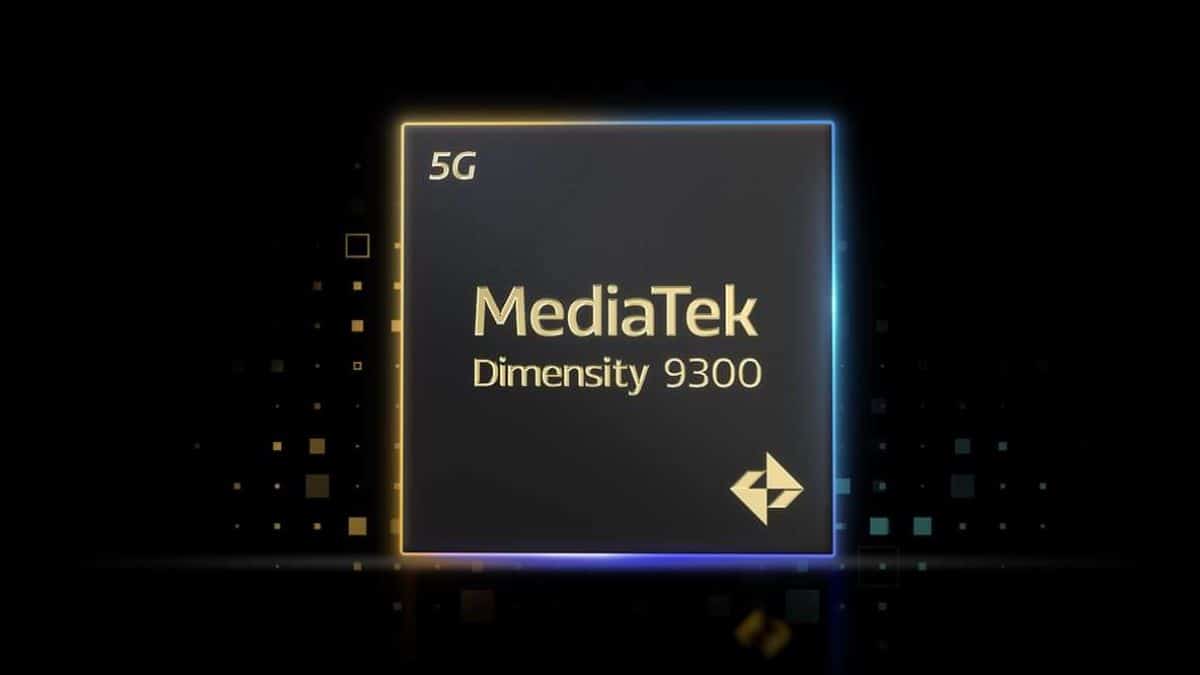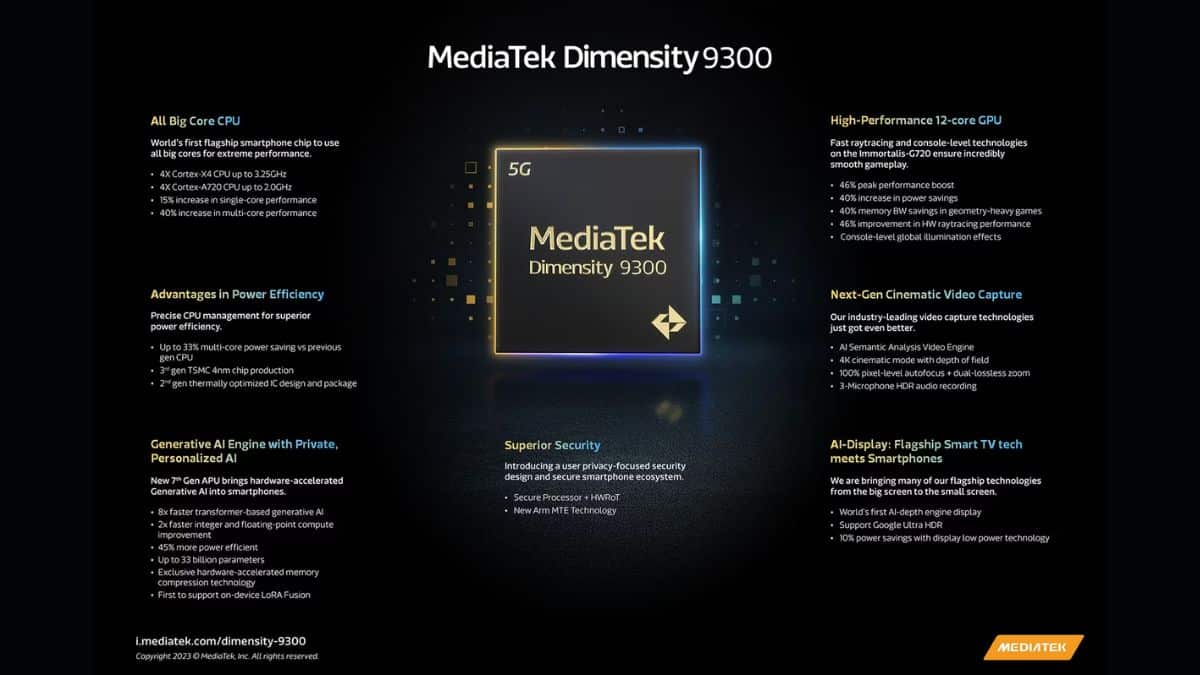HIGHLIGHTS
- MediaTek optimizes the CPU, GPU, and AI capabilities of their most recent chip.
- Along with significant advancements in AI, graphics, and photography, the new MediaTek Dimensity 9300 also features a CPU configuration that significantly modifies the status quo.
- Take a look at the features of Mediatek Dimensity 9300 SoC.

In addition to the 2024 flagship chips from Qualcomm, Apple, and Google, we now have complete information on MediaTek’s most recent mobile processor. Along with significant advancements in AI, graphics, and photography, the new MediaTek Dimensity 9300 also features a CPU configuration that significantly modifies the status quo. Vivo X100 series will be powered by MediaTek Dimensity 9300 SoC officially confirmed launching on November 13th in China.
Dimensity 9300 CPU setup explained
Examining the specifications, the new 4+4 CPU configuration—which has four potent Arm Cortex-X4 cores and four efficient Cortex-A720 cores—stands out as the most significant modification. In contrast to conventional mobile chipsets found in Android phones, such as the most recent Google Tensor G3 and Snapdragon 8 Gen 3, this chipset does not contain any Arm Cortex-A5XX series cores, which are more performing yet use less energy. That can’t be beneficial to battery life, can it? Actually, though, it might work out perfectly.
Finbar Moynihan of MediaTek offered an additional clarification, pointing out that it may be more effective to activate a more potent core, complete the task swiftly, and then shut down as opposed to operating on a less capable core for an extended period of time. With the original Tensor and G2, Google gave a nearly identical justification for its twin Cortex-X1 method. But since then, the Tensor G3 has switched to a more traditional single-large core methodology. MediaTek provides data to support this claim, stating that 10% to 15% less power is consumed by “typical” tasks like social media and online browsing, as well as more demanding applications, as compared to the Dimensity 9200.
Here, the Dimensity 9300 continues to employ a type of three-tier CPU architecture. Three Cortex-X4 cores operate at 2.85GHz, with one bigger core clocked up to 3.25GHz. According to MediaTek, the main difference between both cores’ cache sizes is that the core with a higher clock speed is designed with a larger silicon surface to support the higher frequency. At a maximum clock speed of just 2.0GHz, all four Cortex-A720s are identical, indicating once more that these cores were implemented in a power-efficient manner. In contrast, the A720 cores of the Snapdragon 8 Gen 3 are clocked at up to 3.2GHz.

Designed to use generative AI
In 2023, a chip introduction would be incomplete without mentioning AI capabilities, and MediaTek has made some equally important adjustments in this area as well. With a 45% reduction in power consumption and double the integer and floating point capabilities of the APU 790, the improved Dimensity 9300 is equipped with this processor. For a variety of machine learning tasks, such as speech recognition and picture segmentation, it is far more effective.
The Dimensity 9300 follows the trend and comes with dedicated improvements for on-device generative AI, which according to MediaTek yields an 8x improvement in performance over the previous iteration. Generative AI models, like LLMs, have a memory footprint that is very large, making them difficult to execute on a phone as opposed to a cloud server. The APU 790 circumvents this by supporting INT4 (A16W4), which enables the execution of smaller quantized models, and by providing the APU with a dedicated hardware memory decompression block. To fit into RAM, a 13GB INT8 model, for instance, can be pre-compressed to just 5GB in MediaTek’s example. It can then be decompressed in hardware while traveling to the APU.
Applications-wise, the APU 790 is fast enough for real-time use to execute a 7 billion parameter LLM at 20 tokens per second. Comparatively speaking, Qualcomm claims that the Snapdragon 8 Gen 3 can process a 10 billion parameter LLM at a rate of over 15 tokens per second. With a slightly slower processing rate of 3–4 tokens per second, the Dimensity 9300 can handle a 13 billion LLM with 16GB of RAM or up to 33 billion parameters with 24GB of RAM.
Numerous further Dimensity 9300 enhancements
The newest Dimensity pie has many toppings in addition to CPU and AI, which make up two of its larger portions. For example, gamers now have access to the newest Arm Immortalis-G720 GPU, which has 12 cores instead of the previous generation’s 11 cores. MediaTek predicts up to a 23% peak performance gain over the 9200 and up to a 46% ray tracing uplift when combined with architectural and process node improvements. The promise of a 40% power consumption drop while maintaining the same level of performance as the model from the previous year—allowing for considerably longer playing sessions without needing to be charged—may be more alluring.
Global illumination effects, a 40% memory bandwidth savings for geometry-heavy games, and 2x MSAA support—which produces sharp graphics without sacrificing performance—are other features of the new GPU configuration. Regarding displays, Google’s Ultra HDR display standard from Android 14 is now supported, along with WQHD panels with refresh rates up to 180Hz or 4K at 120Hz. Dual-active display for foldables is also supported.


